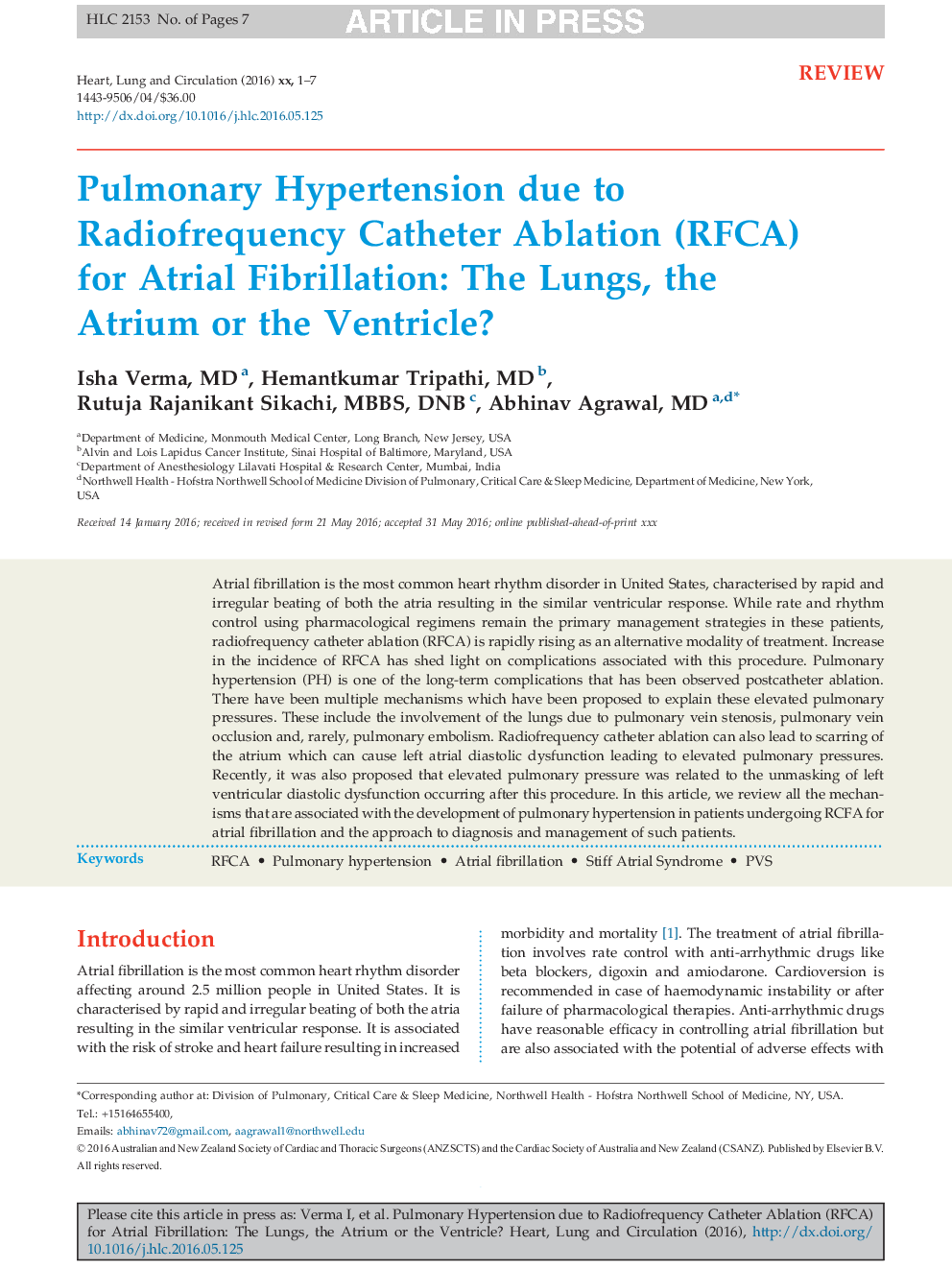| Article ID | Journal | Published Year | Pages | File Type |
|---|---|---|---|---|
| 5603004 | Heart, Lung and Circulation | 2016 | 7 Pages |
Abstract
Atrial fibrillation is the most common heart rhythm disorder in United States, characterised by rapid and irregular beating of both the atria resulting in the similar ventricular response. While rate and rhythm control using pharmacological regimens remain the primary management strategies in these patients, radiofrequency catheter ablation (RFCA) is rapidly rising as an alternative modality of treatment. Increase in the incidence of RFCA has shed light on complications associated with this procedure. Pulmonary hypertension (PH) is one of the long-term complications that has been observed postcatheter ablation. There have been multiple mechanisms which have been proposed to explain these elevated pulmonary pressures. These include the involvement of the lungs due to pulmonary vein stenosis, pulmonary vein occlusion and, rarely, pulmonary embolism. Radiofrequency catheter ablation can also lead to scarring of the atrium which can cause left atrial diastolic dysfunction leading to elevated pulmonary pressures. Recently, it was also proposed that elevated pulmonary pressure was related to the unmasking of left ventricular diastolic dysfunction occurring after this procedure. In this article, we review all the mechanisms that are associated with the development of pulmonary hypertension in patients undergoing RCFA for atrial fibrillation and the approach to diagnosis and management of such patients.
Related Topics
Health Sciences
Medicine and Dentistry
Cardiology and Cardiovascular Medicine
Authors
Isha MD, Hemantkumar MD, Rutuja Rajanikant MBBS, DNB, Abhinav MD,
